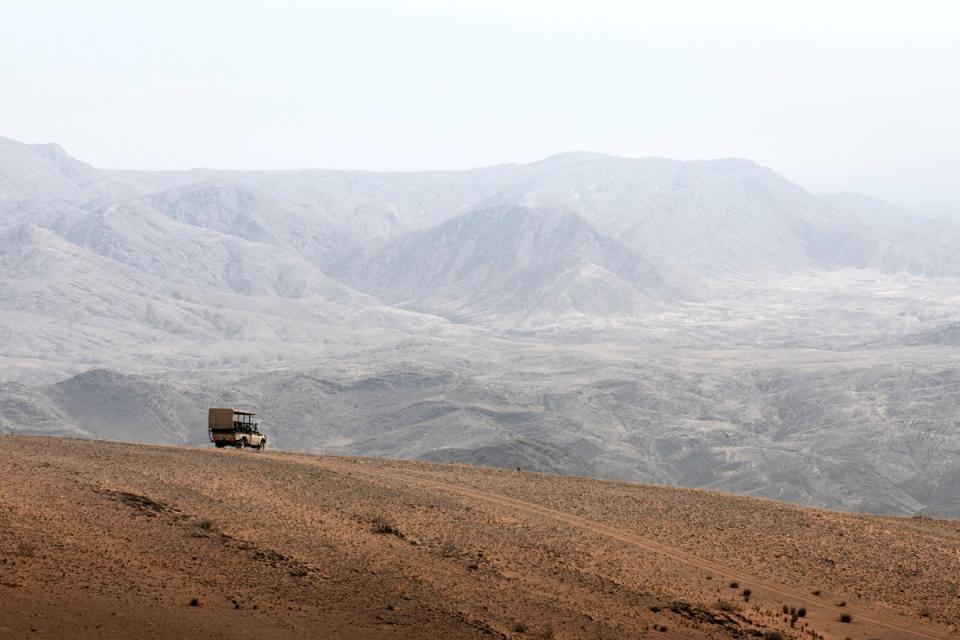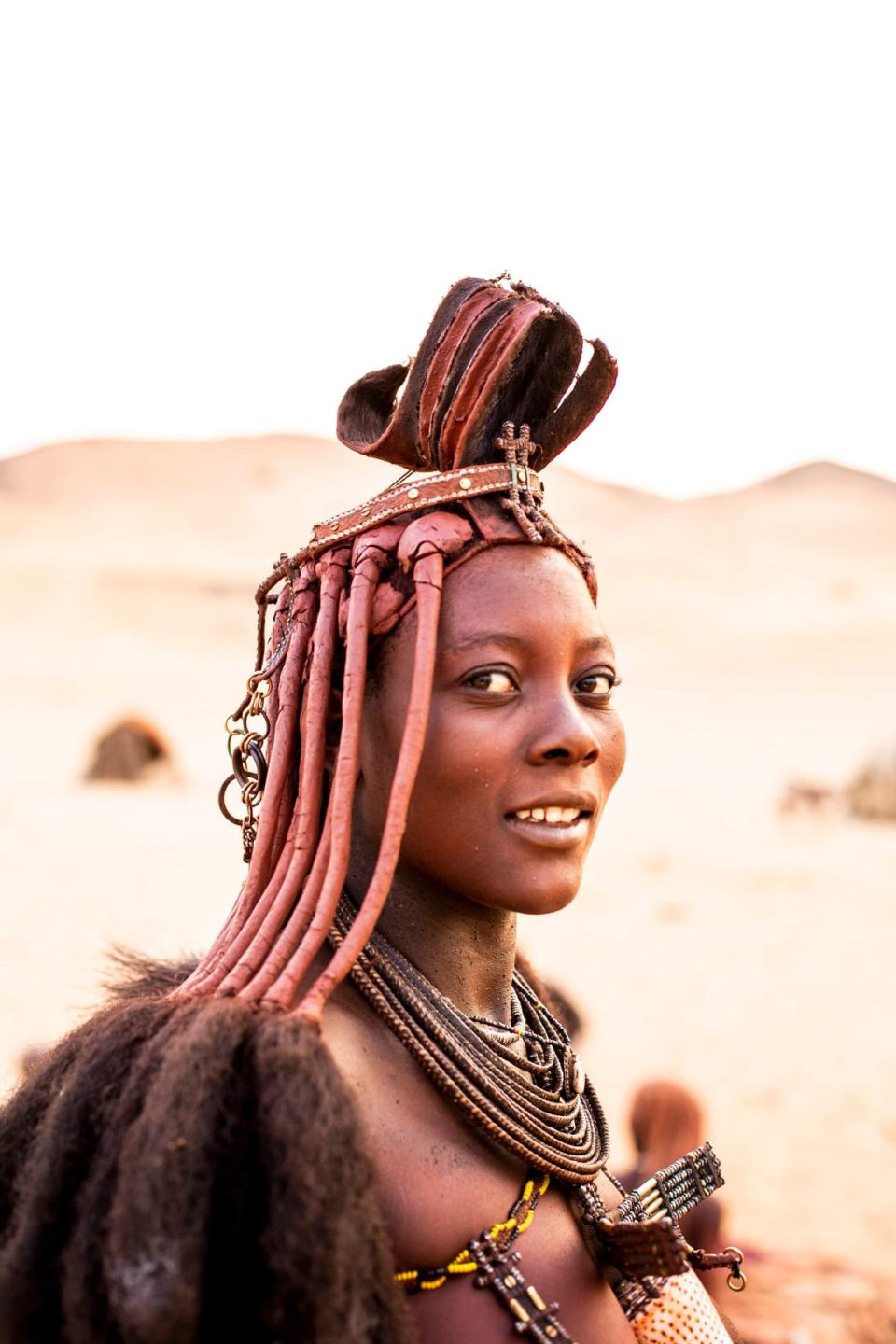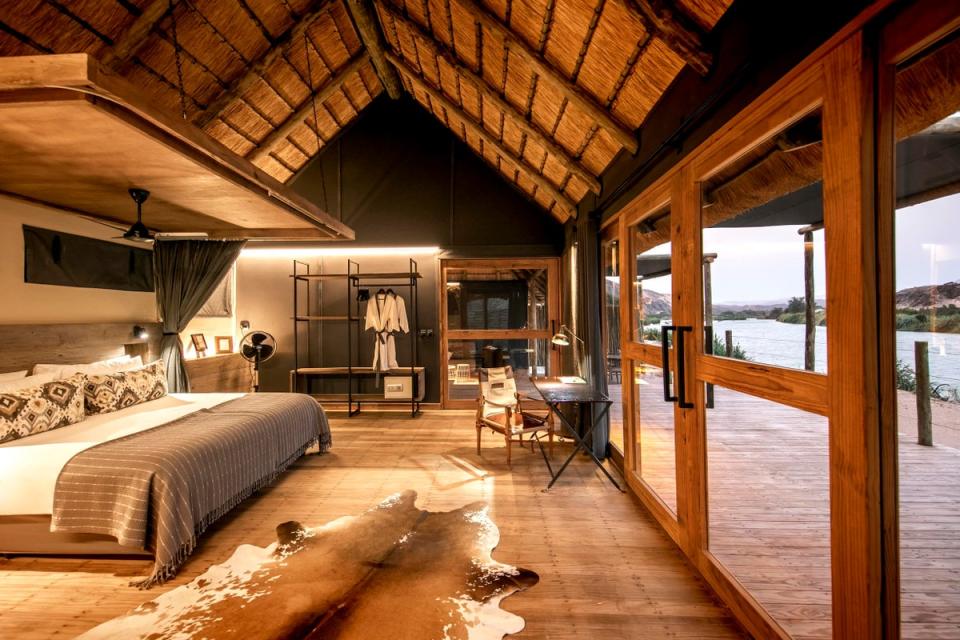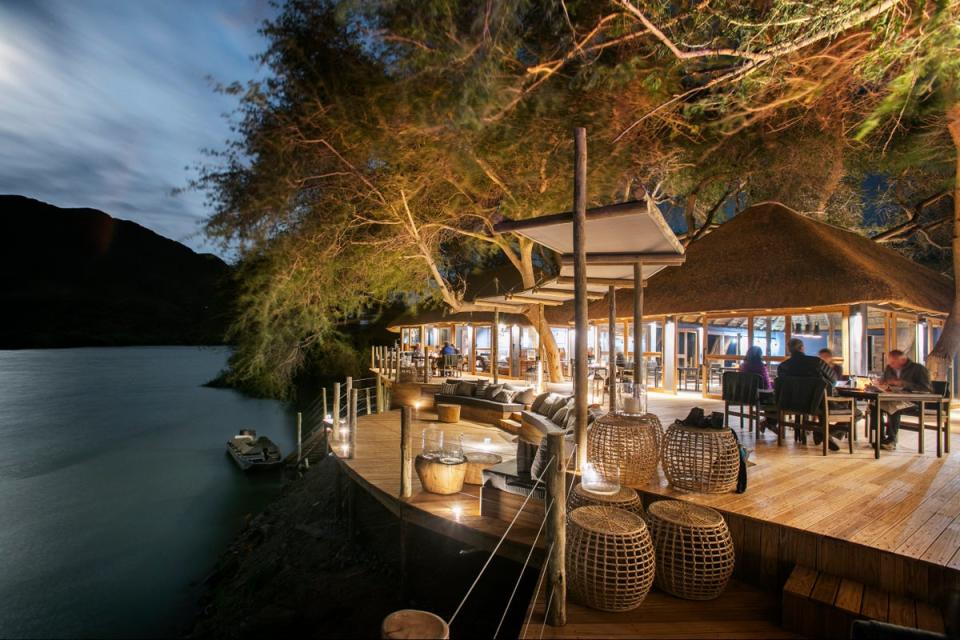The Wilderness Safaris Serra Cafema camp captures the wild magic of Namibia

Namibians call their home the Land God Made in Anger and the Place of Great Drought, and while neither term makes it sound like a particularly alluring holiday destination, both are rather apt descriptions.
In comparison to the relative lushness of its neighbours, Namibia is almost eerie in its starkness. Everything is built to giant scale, but with no giants to enjoy it. There are dry riverbeds, scrublands that stretch to the horizon and sand dunes surrounded by a halo of orange dust.
It is this desolation that sucks you in. The roads to nowhere, in particular, are hard to resist. Namibia is nearly twice the size of France, but its population of just two million people mostly live in Windhoek – and the knowledge that you could drive for a day in certain directions and not see another human being is both titillating and terrifying. Like someone beautiful but slightly dangerous who your mother would definitely warn you off.
Visitors usually cluster around the Skeleton Coast or the famous Big Daddy sand dune and its twin, Dead Vlei. This is desert drama at its best: a hulking sand dune on one side and a dry bed of sickly tree trunks on the other. It is extraordinary to look at, but the world knows about it – Apple even has an image of Dead Vlei as a stock screensaver. Last time I went, three different Instagram influencers were posing against the dead bark, their perfectly manicured feet burrowing in the sand.

If it is isolation you’re looking for, you can still find it – but it is now mostly in the north, towards the river border with Angola. There, in the Himba Province, ochre-painted people live nomadic lives entirely removed from the modern world, their skin shimmering with red dye and their hair plaited with the feathers of dead birds. As they walk along the sand dunes from village to village, wearing little more than a loincloth and silhouetted against the hot sun, it feels as if you have been sucked inside a National Geographic magazine.
The landscape is extraordinary, with undulating sand-dunes giving way to dusty ravines. On the drive up from Windhoek, we saw gemsbok delicately pick their way down the vertical ravines, klipspringers and duikers eating the clusters of green grass and warthog trotting towards small pools of water. But this far north, there is nothing, just an endless of expanse of hot dry earth, in a setting so beautiful it looks like art.

And then there is the oasis. In the middle of one of the driest and most inhospitable places on earth, an emerald green jungle appears, snaking its way through the orange and buttermilk yellow landscape. On either side of the Kunene River — the heavy expanse of brown water that flows in a thick torrent from the Angolan highlands and divides the two countries — the land becomes heady with life.
Wilderness Safaris’ extraordinary Serra Cafema camp is set in this brief burst of greenery and is the only lodge along this entire stretch of desert, although you can pitch a tent where ever you feel like stopping. Birds of paradise flutter down to the water, crocodiles bask in the hot sand and fish eagles soar overhead. God might have made this land in anger, but around the Kunene, he was clearly in a good mood.
The camp itself is delightful. Rooms are stylish and airy, with double beds big enough for four, outdoor showers and candles to take out to your private deck, which looks onto the river. The rapids, which crocodiles surf down and local people risk their lives to battle through and cross to the other side, sound exactly like waves hitting a shoreline. Sitting on the deck surrounded by reeds and looking at the moon-drenched water, I kept forgetting that I wasn’t by the sea.

There is a magic in the air in this part of Namibia that could have been messing with my mind. Fairy-circles pockmark the earth, and theories abound as to where they came from. Some are scientific: they are boma marks left by the nomadic people or termites, or a by-product of volcanic heat. Others are more fantastical – and more tempting. The Himba people believe they are signs left by the ancestors, the Ovambo tribe think they are literal fairy circles, created by local goblins. None of the suggestions make much sense, given there are very few people this far north and hardly any termites. “Perhaps it is alright not to know,” says my guide, Ballak Karutjaiva, with a smile and a shrug, when I pester him to pick an answer.

Emptiness implies silence, but in Namibia that is not always the case. High up in the trees, sociable weavers made huge, untidy nests and chatter throughout the day. Ballack and I walked every morning, and when you’re on foot, bird life is magnified – yellow crested hornbills become almost as enchanting as cheetah cubs. He pointed out the various plants you can use to stay alive, some to brush your teeth with, others to soothe snake bites with. Under the canopy of leaves, I felt like I could have been in the Congo or the Amazon. The only sign that that I was in one of the most unforgiving deserts on earth came when I looked down at my knees, hands and socks, which were always covered in a light film of tangerine coloured sand.
Weeks later, while walking down a London street, I found a clump of sand in my bag and the glowing orange granules looked almost radioactive in the grey, northern light. Or magical – like something from a fairy story.
Melissa Twigg travelled to Namibia with Wilderness Safaris.
Rainbow Tours ( 020 7666 1260) can offer a nine night holiday combining Windhoek with Little Kulala, Damaraland Camp, Sera Cafema and Desert Rhino from £7795 per person. The price is based on two sharing and includes international and inter-camp flights, transfers, all meals and all activities.

 Yahoo Movies
Yahoo Movies 
